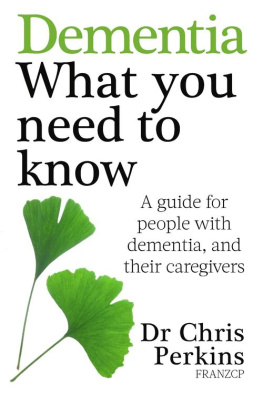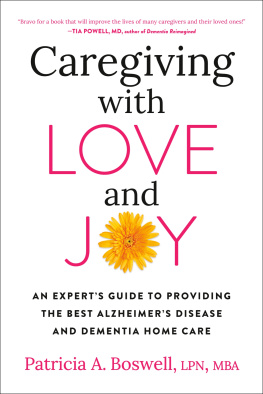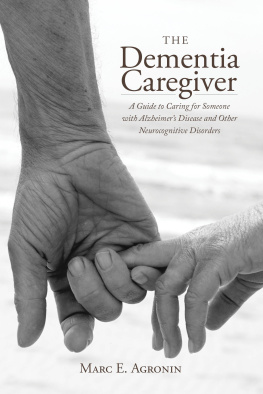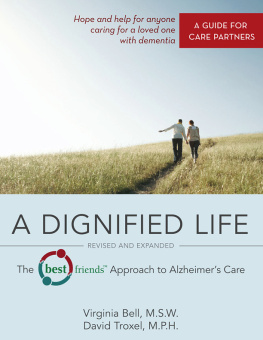DID I REMEMBER
TO TELL YOU?
A Real-Life Guidebook for Dementia Family Caregivers
PAM KOVACS JOHNSON

AuthorHouse
1663 Liberty Drive
Bloomington, IN 47403
www.authorhouse.com
Phone: 833-262-8899
Copyright 2020 Pam Kovacs Johnson. All rights reserved.
No part of this book may be reproduced, stored in a retrieval system, or transmitted by any means without the written permission of the author.
Published by AuthorHouse 08/31/2020
ISBN: 978-1-7283-7212-9 (sc)
ISBN: 978-1-7283-7211-2 (e)
Library of Congress Control Number: 2020916523
Any people depicted in stock imagery provided by Getty Images are models,
and such images are being used for illustrative purposes only.
Certain stock imagery Getty Images.
Because of the dynamic nature of the Internet, any web addresses or links contained in this book may have changed since publication and may no longer be valid. The views expressed in this work are solely those of the author and do not necessarily reflect the views of the publisher, and the publisher hereby disclaims any responsibility for them.
A TREE
Today a tree
Tomorrow a tree
But not the same
Except in name.
Each day
There is a ch ange
For the tree
Fo r me.
CONTENTS
Charley Able
September 14, 1925 January 1, 2020
This book is dedicated in loving memory to my dad - a great storyteller and a wonderful father. My dad loved to make people laugh and share entertaining stories of his youth. He cherished his family and his friends. Throughout my life with his words and examples, he showed me the importance of being kind, caring, and respectful.
This book is written especially for family members and special friends who are loving and caring for someone with Alzheimers or another dementia. It is intended to be an easy-to-read, non-clinical guidebook to give families a real-life understanding of Alzheimers and other forms of dementia. You will find it filled with ideas, approaches, and best practices for effective and compassionate dementia care, along with a bit of humor. My hope is that this book will help in making this difficult journey a little easier for you, the caregiver, as well as those living with any of these progressive neurological diseases.
I was first introduced to the disease as a pre-teen when my grandparents came to spend the summer with my family. This was in the early sixties before anyone knew the word Alzheimers. My paternal grandfather did and said a lot of crazy things during those months, and I learned a lot of new words that I had never heard before, certainly not ones that were used in our home. It was the first time I ever saw my grandmother cry. I think these were the roots of my lifelong passion to help families affected by this devastating illness.
For decades, it has been my honor and privilege to care for people in various stages of dementia and to provide support for their families. As a health care professional with extensive Alzheimers knowledge, training, and more than 40 years in the field of aging, I really thought I had a good grasp of this disease as well as its impact on families. I was so wrong.
In 2008, my father came to live with me after my mother died. Having no siblings, I became his primary caregiver. Shortly thereafter, Dad was diagnosed with mixed dementia, meaning he had both Alzheimers Disease and Vascular Dementia. That was when my understanding of this disease came full circle, giving me an unimaginable viewpoint.
After years of urging and encouragement from family caregivers, I finally decided to write this book. My perspective has always been a bit unique in that I look at dementia care differently, with more of a what-if-it-were-me approach mixed with a bit of common sense. Now with a personal understanding of the disease I realize why it is so difficult for us, family caregivers, to do and say the right things. I have a renewed appreciation for the many challenges and emotions that become a routine part of each day.
This book gives practical information about dementia in a way that will allow you to understand exactly how the symptoms impact our loved-one and affect his or her abilities. It explains not only why we must say, do and respond differently than we did in our life before the disease, but tells you how to do it more effectively and compassionately.
In support of this project, many families have shared with me their own personal stories and experiences presuming that this might be of value to others. Some of these might even sound like yours, as many caregivers have had similar stories regardless of how one-of-a-kind they may seem. The names have been changed and the details are to the best of my recollection, but I would guess that some of my memories could be a convergence of different caregivers narratives or situations.
You will read about their successful moments and mishaps as well as many of my own triumphs and mistakes. Although dementia is not a one size fits all, there are simply some approaches that work and those that do not.
Alzheimers and other dementias are difficult and complicated diseases, and the keys to good care practices and techniques will be intertwined throughout various chapters. It is easy to be overwhelmed by the demands of caring for a loved one with dementia and there are countless things we need to hear more than once and in more than one way again and again.
Most of the content of this book addresses concerns, issues and challenges often encountered in the middle stages. For ease in both writing the book as well as for you the reader, I will frequently be using the term dementia throughout the book rather than just using the word Alzheimers. Although Alzheimers disease is the most common cause of dementia, any type of dementia is physically, emotionally, and financially devastating. Also, I have predominately used the word dementia out of respect for families that are struggling to learn more as they are caring for loved-ones with other specific types, such as Lewy Body dementia (LBD), vascular cognitive impairment, Frontotemporal dementia (FTD), or Parkinsons dementia.
While I would suggest that the book be read from front to back as each chapters content relates in some way to another, I hope that you will read it in the manner that best suits your personal needs and concerns. I encourage you to highlight and make notes in the margins to enable you to return to the book on those most demanding and trying days. I sincerely hope that you will find something in this book that is useful, along with a good reason to laugh or smile.
With gratitude,
Pam Joh nson

CHAPTER 1
EVERYTHING CHANGES
At the time it seemed like a good idea. We were spending the day at the lake with our best friends, picnicking in a small secluded cove. When our husbands agreed to watch all four kids, my girlfriend and I decided it was finally our time to relax and have some fun. The two of us could barely fit in the childrens inflatable boat, and the fact that it was round didnt help the situation. Somehow, each with a paddle in hand, we figured out how to stop going in circles and maneuvered the vessel away from shore. It was a genuine Goldilocks moment not too hot, not to windy, even the waves were just right.
Briefly relieved of our parental responsibilities, it was easy to lose track of time. Im not sure how long it was before we realized that we were no longer within the safe confines of the cove. While we were busy talking and soaking up the sun, the current had taken us out into the main body of the lake amongst a heavy barrage of fast boats and skiers. Looking back to shore, we could see the guys frantically yelling and waving, and the children hysterically watching. Although we couldnt hear any of them, we could see the panic on their faces. We were getting pretty scared too. This part of the adventure had not been in our plans.
Next page








